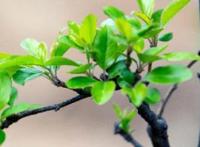初中英语知识点总结(3)
专有名词如果是含有普通名词的短语,则必须使用定冠词the。如:the Great Wall(长城)
姓氏名如果采用复数形式,则表示该姓氏一家人(复数含义),如:the Greens( 格林一家人)。
2、普通名词是许多人或事物的共有名称。如:pupil, family, man, foot.
普通名词又分为可数名词和不可数名词。
▲可数名词是可以用简单的数词进行计数的名词,如: box, child, orange;
▲不可数名词是不可以用简单的数词进行计数的名词。如:water, news, oil, population, information .
二、英语可数名词的单复数:英语可数名词有单数和复数两种形式。
1、名词由单数变复数的基本方法如下:
①在单数名词词尾加s。如:map → maps,boy→ boys,horse→ horses, table→ tables.
②s,o,x ,sh,ch结尾的词加es.如:class→classes, box→boxes, hero→heroes, dish→dishes, bench→benches.
[注]:少数以o结尾的词,变复数时只加s。如:photo→photos, piano→pianos.
③以辅音字母加y结尾的名词,变y为i,再加es。如:family→families, city→cities, party→parties.
④以f或fe结尾的名词,变f或fe为v,再加es。如:shelf→shelves, wolf→wolves, life→lives, knife→knives.
2、不规则变化:man→men, woman→women, sheep→sheep,tooth→teeth, fish→fish, child→children, ox→oxen, goose→geese
不可数名词一般没有复数形式,说明其数量时,要用有关计量名词。如:a bag of rice→two bags of rice, a piece of paper→three pieces of paper, a bottle of milk→five bottles of milk.
三、名词所有格:
1、 名词所有格表示所属关系,相当于物主代词,在句中作定语、宾语或主语。其构成法如下:
(1)表示人或其它有生命的东西的名词常在词尾加s。如:Childerns Day(儿童节), my sisters book(我姐姐的书)
(2)以s或es结尾的复数名词。只在词尾加。如:Teachers Day(教师节)
(3)有些表示时间、距离以及世界、国家、城镇等无生命的名词,也可在词尾加s. 如:
todays newspaper(今天的报纸), ten minutes break(十分钟的课间休息),Chinas population(中国的人口).
(4)无论表示有生命还是无生命的东西的名词,一般均可用介词of短语来表示所有关系。如:
a fine daughter of the Party(党的好女儿).
2、[注解]:
① ‘s还可以表示某人的家或者某个店铺,如:my aunts(我阿姨家), the doctors(诊所)
② 两人共有某物时,可以采用 A and Bs 的形式,如:Lucy and Lilys bedroom(露西和丽丽合住的卧室)
③ “of 名词所有格/名词性物主代词”,称为双重所有格,如:a friend of my fathers(我父亲的一位朋友), a friend of mine(我的一位朋友)
姓氏名如果采用复数形式,则表示该姓氏一家人(复数含义),如:the Greens( 格林一家人)。
2、普通名词是许多人或事物的共有名称。如:pupil, family, man, foot.
普通名词又分为可数名词和不可数名词。
▲可数名词是可以用简单的数词进行计数的名词,如: box, child, orange;
▲不可数名词是不可以用简单的数词进行计数的名词。如:water, news, oil, population, information .
二、英语可数名词的单复数:英语可数名词有单数和复数两种形式。
1、名词由单数变复数的基本方法如下:
①在单数名词词尾加s。如:map → maps,boy→ boys,horse→ horses, table→ tables.
②s,o,x ,sh,ch结尾的词加es.如:class→classes, box→boxes, hero→heroes, dish→dishes, bench→benches.

[注]:少数以o结尾的词,变复数时只加s。如:photo→photos, piano→pianos.
③以辅音字母加y结尾的名词,变y为i,再加es。如:family→families, city→cities, party→parties.
④以f或fe结尾的名词,变f或fe为v,再加es。如:shelf→shelves, wolf→wolves, life→lives, knife→knives.
2、不规则变化:man→men, woman→women, sheep→sheep,tooth→teeth, fish→fish, child→children, ox→oxen, goose→geese
不可数名词一般没有复数形式,说明其数量时,要用有关计量名词。如:a bag of rice→two bags of rice, a piece of paper→three pieces of paper, a bottle of milk→five bottles of milk.
三、名词所有格:
1、 名词所有格表示所属关系,相当于物主代词,在句中作定语、宾语或主语。其构成法如下:

(1)表示人或其它有生命的东西的名词常在词尾加s。如:Childerns Day(儿童节), my sisters book(我姐姐的书)
(2)以s或es结尾的复数名词。只在词尾加。如:Teachers Day(教师节)
(3)有些表示时间、距离以及世界、国家、城镇等无生命的名词,也可在词尾加s. 如:
todays newspaper(今天的报纸), ten minutes break(十分钟的课间休息),Chinas population(中国的人口).
(4)无论表示有生命还是无生命的东西的名词,一般均可用介词of短语来表示所有关系。如:
a fine daughter of the Party(党的好女儿).
2、[注解]:
① ‘s还可以表示某人的家或者某个店铺,如:my aunts(我阿姨家), the doctors(诊所)
② 两人共有某物时,可以采用 A and Bs 的形式,如:Lucy and Lilys bedroom(露西和丽丽合住的卧室)
③ “of 名词所有格/名词性物主代词”,称为双重所有格,如:a friend of my fathers(我父亲的一位朋友), a friend of mine(我的一位朋友)






























